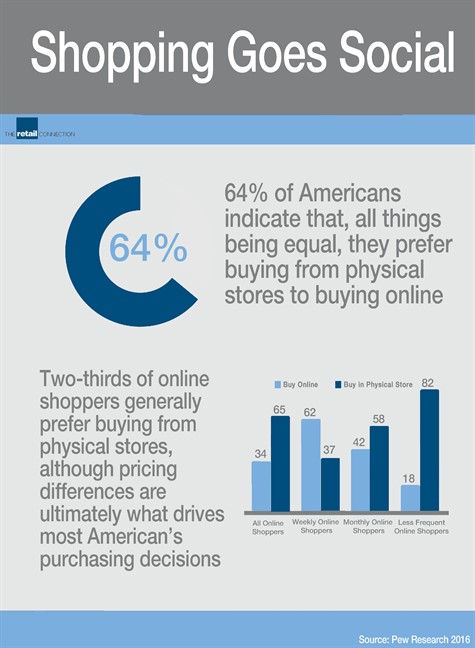Social Tools to Blend Brick-and-Mortar with Omnichannel

Snapping a picture of a pair of shoes, tweeting the link to your new favorite top, uploading an #ootd to Instagram – these are everyday activities for many Millennials, and retailers are jumping on board the omnichannel train by upping their social game.
With over 300 million daily active users, Instagram has become a place where retailers can not only promote their products and services but also engage their social audience to build customer loyalty. Michael Kors rewards the customers that are the most active with the brand on Instagram with early access to new products and special promotions. Similarly, J. Crew recently offered 50 pairs of sunglasses for pre-sale to only their Instagram followers via Instagram stories, the new snapchat-like feature on the app.
Liketoknow.it
Liketoknow.it, an Instagram monetization tool created by rewardStyle, has revolutionized the shopability of the social platform. After registering for LiketoKnow.it, users receive a shoppable email whenever they “heart” an Instagram photo from a rewardStyle influencer. The email contains the direct links of all of the products in the photo so that the user can shop easily. As a fashion blogger, I utilize this tool daily on my Instagram account @fashionandfrills in order to share outfit details with my audience.
Buy Button
To blur the line even further between social network and social commerce, retailers and social platforms experimented last year with a “buy button” that was added to Facebook, Twitter and Pinterest in order to streamline the social shopping process. According to research conducted by Aimia, 56% of consumers follow brands on social media to view their products. As price is typically the deciding factor according to Pew Research, if a buy button can turn a browser into a buyer, that’s all the more reason for retailers to up their social media presence.
Brick-and-mortar
Retail stores are utilizing geo-targeted Facebook ads to reach users with specific characteristics in their particular neighborhood and drive traffic into their stores. Likewise, retailers are driving traffic to their store by offering promotions via on-line tools like a 24-hour snapchat story. Men’s Wearhouse deployed Snapchat geofilters to 18,000 high schools during prom season and received a 48% engagement rate from users. And, according to one survey, 57% of respondents turn to Twitter to determine which stores to visit.
Further, once consumers reach their store, iBeacon technology provides promotions and offers via cell phone as consumers come within proximity of the implemented technology.
The future successful retailer will embrace omnichannel sales, using their digital assets to drive consumers to stores for brand experiences; and use their brick-and-mortar stores to drive consumers to their digital assets for choice and convenience. And while according to Pew Research, 64% of consumers prefer buying products in a brick-and-mortar store, It is the blend of the on- and off-line worlds that will prove to be the winning combination for successful retail, as square footage, retailer mix, demographics, and locations evolve in retail commercial real estate markets.


